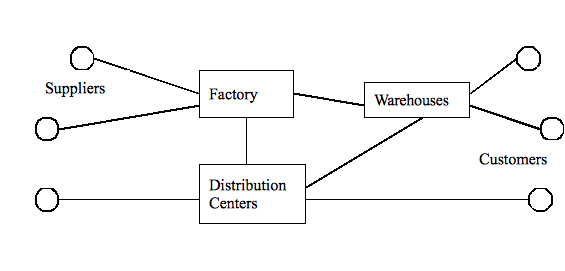| << Chapter < Page | Chapter >> Page > |
Business Fundamentals was developed by the Global Text Project, which is working to create open-content electronictextbooks that are freely available on the website http://globaltext.terry.uga.edu. Distribution is also possible viapaper, CD, DVD, and via this collaboration, through Connexions. The goal is to make textbooks available to the manywho cannot afford them. For more information on getting involved with the Global Text Project or Connexions email us atdrexel@uga.edu and dcwill@cnx.org.
Editor: Steven D Sheetz (Virginia Tech, USA)
Contributors: Kimberly Watkins, Sarah ElShawarby, Nicholle Depaz (Virginia Tech, USA)
Reviewer: Robin S Russell (Virginia Tech, USA)
The rapid change in technology and the development of the Internet has changed the traditional definitions of manufacturers, suppliers, and customers. Supply Chain Management (SCM) is the integration of key business processes that add value for customers and other stakeholders. This added value is created through the integration of networks of suppliers that provide products, services, and information. Supply chain management allows this network of cooperating agents to perform one or more supply chain functions, potentially reducing costs and resulting in a competitive advantage for the organization.

The above figure illustrates the movement of products through a supply chain network. The supply chain begins when suppliers send raw materials to a factory. The factory may use the materials in a number of ways. They can either manufacture subcomponents or assemble the materials into finished products to be sent to the warehouse or distribution center where customers can get the products.
In order for the supply chain to be successful, organizations must recognize that they are but one player in the long chain that starts with suppliers and also includes transporters, distributors, and customers. The organizations must interact cooperatively with their channel partners (Gandhi, 2003). An important issue relating to the development of a collaborative supply chain is following specified ordering and replenishment policies. An example of Collaborative Supply Chain Planning (CSCP) is Vendor Managed Inventory (VMI).
Vendor Managed Inventory allows the supplier to receive electronic data to maintain constant information about the manufacturer’s sales and stock levels. The supplier is then responsible for creating and managing the inventory replenishment schedule. VMI is defined as a process where the supplier generates orders for customers based on demand information sent by the customer (Gandhi, 2003). VMI leads to changes in both the buyers’ and suppliers’ inventory management activities. VMI has not become a standard way of managing the replenishment process in the supply chain due to some practical issues that have slowed down its implementation in many organizations. One problem may exist because the supplier and manufacturer are unwilling to share information because of a lack of trust. In order for VMI to be effective, it has to produce observable benefits, especially in the reduction of inventory costs.

Notification Switch
Would you like to follow the 'Business fundamentals' conversation and receive update notifications?